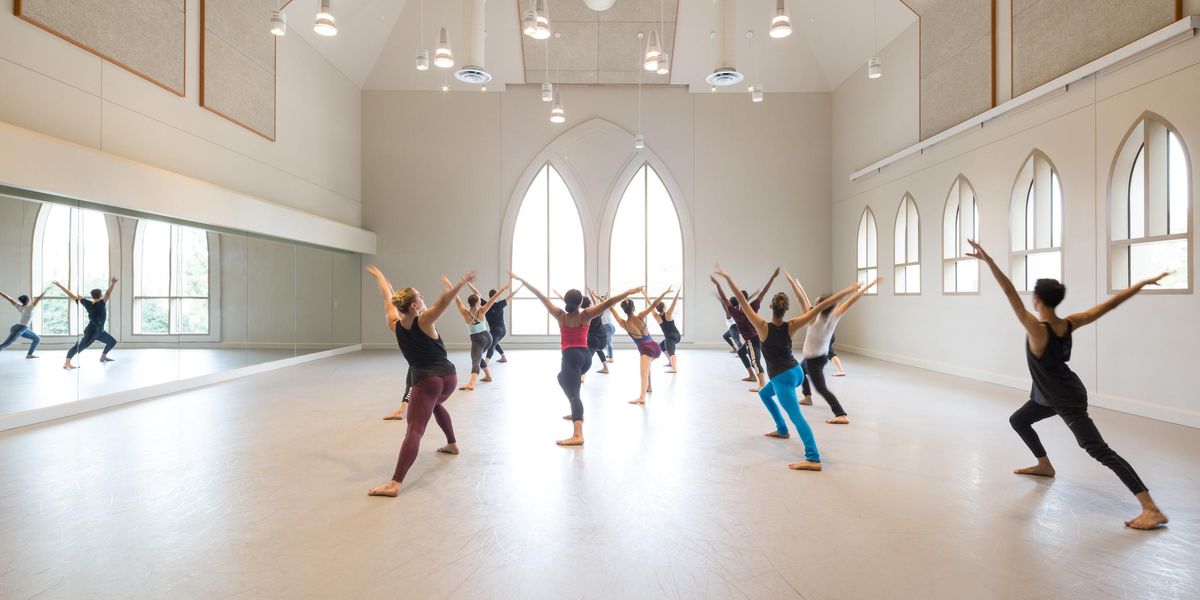More Than a Novelty
Tap artist Brenda Bufalino argues it’s time to rethink the way we write about tap.
Dorrance Dance is stretching the boundaries of tap with their theatricality and virtuosity. Photo by Christopher Duggan, Courtesy Jacob’s Pillow.
Critics are always forecasting the next decline of tap dancing. In one instance, a 2011 review in The New York Times, Claudia La Rocco wrote, “Tap is unquestionably a great American art form. It is also unquestionably in dire straits.” Nothing could be farther from the truth. It is a thrilling moment for tap. Never before have dancers been so skilled in technique and capable of such tour de force in a myriad of styles. Our concert theaters are filling up, for the unique choreography and ensemble tap of Dorrance Dance and Max Pollak’s RumbaTap in New York; Acia Gray’s Tapestry Dance Company in Austin, Texas; and Mark Yonally’s Chicago Tap Theatre. Tony Waag’s “Tap City” in New York hosts hundreds of dancers from around the world. Yet writers and critics persist in approaching tap dance as a novelty, investigating its origins as if it were a relic just discovered, a dying art soon to be buried again.
When writers cover other forms of dance they speak about the particulars that make up a satisfying performance. They are equipped to reference past works and compare specific dances from a choreographer’s repertory. In contrast, tap dance to date has been written about as if it were a folk dance. Many critics have created a hierarchy of authenticity that keeps tap dancers competing on the street corner.
Wouldn’t it be helpful to share with the public the subtleties and techniques of tap dance? For instance, a writer might reveal the composition of the band, and how the dancer collaborated with their chosen musicians. Were the taps clear and tonal? Was the approach to the floor hard-hitting and loud, or melodic and subtle? Could the dancer modulate between syncopated phrasing, continuation 8th note triplets, and sixteenth notes with ease? Did the dancer phrase melodically, or have the hard punch and short phrases of a drummer?
Chicago Tap Theatre’s show, “We Will Tap You!” celebrated the music of Queen. Photo by Josh Hawkins, Courtesy Chicago Tap Theatre.
Dancers strive to create with their own unique voice. Can the reviewer recognize and differentiate between the hard hitting, hip-swinging style of Syncopated Ladies, the high-flying slides and gleeful
elevation of Joseph Wiggan and the funk/jazz fusion style of Jared Grimes? What about Michelle Dorrance’s dramatic sense of building entrances and fast exits?
Unfortunately, many of those who presently write about tap and review performances have not done their research. This lack of understanding often has catastrophic results for artists seeking financial support and recognition.
There is also the notion that tap dance is a solo form. In a 2004 New Yorker review, Joan Acocella wrote, “At its best [tap] uses improvisation, and you can’t make group patterns if everyone is doing his own thing. From this limitation—solo improvisation—comes tap’s great strength, its status as an act of personal heroism: naked, here-I-stand. Nevertheless, the limitation is a limitation, emotionally and commercially.” This idea would dismiss the great variety acts of Coles & Atkins; Pete, Peaches & Duke; The Miller Brothers; The Madison Trio and countless others. It also dismisses the vitality of a tap renaissance that began in the 1970s with groundbreaking companies like the Jazz Tap Ensemble and the American Tap Dance Orchestra. They created a brand new form of concert tap dance for their ensembles, interspersing solo and group improvisation with composed, highly choreographed dances. This form, similar to that of jazz ensembles, is still employed by tap companies and soloists.
Syncopated Ladies’ video to Beyoncé’s “Formation” went viral. Photo Courtesy Chloe & Maud Productions.
Today, inspired by the Dorrance Dance theatricality and virtuosity, many new choreographers are bravely stretching the boundaries of tap. It is thriving internationally as far as India, where Jason Samuels Smith performed with the late kathak master Pandit Chitresh Das, and Germany, where Thomas Marek and Sebastian Weber create unique conceptual tap works. Festivals throughout the U.S. have been running for a decade or longer.
Tap dancers are the entrepreneurs of the dance world. If there isn’t a venue to be found then one will be created, in a club, at a wedding, in a festival, as a guest artist with the Philharmonic or grooving with the band at Dizzy’s Jazz Club. Through the dedication and passion of its dancers, tap will continue to thrive.
Brenda Bufalino is a tap dancer, choreographer and teacher.




